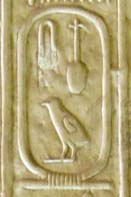King Snefru
Snefru (aka Sneferu) was the first pharaoh of the Fourth Dynasty, during the Old Kingdom Period. His name meant “to make beautiful”. After his death, the Egyptians remembered him as a good and just ruler. His reign provided the basic labor structure his successor, Khufu, used to build the Great Pyramid.
Family
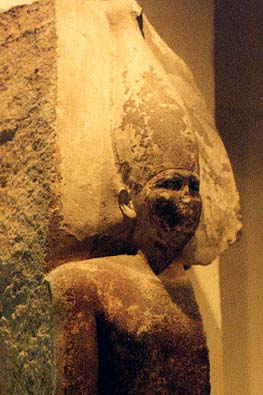
© JMCC1 - Statue of King Snefru
The relationship between the pharaohs of the Third and Fourth Dynasties is uncertain. The last king of the Third Dynasty, Huni, might have been Snefru's father, but there is no substantial evidence to prove this.
Snefru is known to have married Hetepheres, the daughter of Huni. If Snefru was also the son of Huni, this means that he married his half sister, like several other famous Egyptian pharaohs. This practice was meant to solidify the king's claim to the throne.
Snefru had several children beside his heir, Khufu. Some scholars think that Snefru's first vizier, Prince Nefermaat, was also his son.
Egyptologists found a mastaba (tomb) for one of Snefru's sons near his Meidum pyramid. Some think that the pharaoh might have moved his capital after his son's death. Other mastabas belonging to Snefru's various children were founds in different graveyards, enabling scholars to compile a list of Snefru's children.
Reign
Snefru reigned for at least 24 years. During this time, he conducted military expeditions into Nubia and Libya. His goal was to get captives to increase his labor force. The raids also provided cattle and raw materials. He also received trade ships carrying cedar, likely from Lebanon, and mined turquoise and copper in the Sinai.
His purpose was to finance his building projects and maintain a large workforce. In order to support this approach, he organized the country to allow for fewer people to produce food. He also developed methods for large scale quarrying and his builders learned how to make pyramids.
Snefru's reign was a time of experimentation. His builders worked with different pyramid building techniques to learn how to made a solid pyramid, while artists tried new ways of depicting images in tombs. Scholars have found tombs with some wall decorations painted on plaster and some carved into the walls. It seems the people were trying to determine which way would allow the images to last longer.
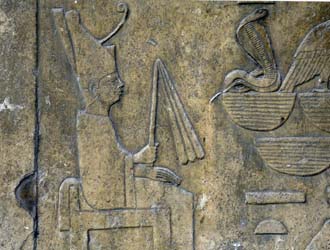
© Juan R. Lazaro - Relief of King Snefru
Building Projects
Snefru built all over Egypt, but his best known projects are his three pyramid complexes.
His first pyramid at Meidum was a large step pyramid. Later in his reign, Snefru turned this pyramid into a true pyramid by adding an outer casing. The change in construction might reflect a rise in the importance of Ra.
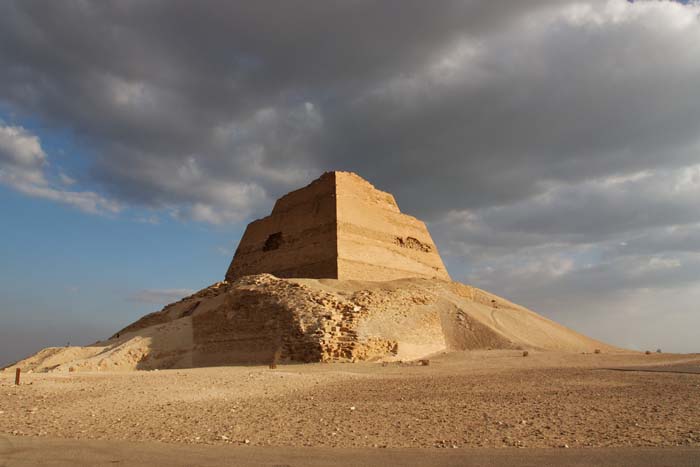
© NeferTiyi - King Snefru's Pyramid at Meidum
All Snefru's pyramids included funerary complexes. These had courtyards, temples and a false tomb or cult pyramid serving as places of worship for the pharaoh's funerary cult.
After Snefru moved his court to Dahshur, he built the first two true pyramids.
The Bent Pyramid was the first one built. Its original slope was 55 degrees, but the rock under the pyramid was unstable. This caused the pyramid to crack and the builders constructed a casing around the base. The rest of the pyramid has a 43 degree angle, which gives it a bent shape.
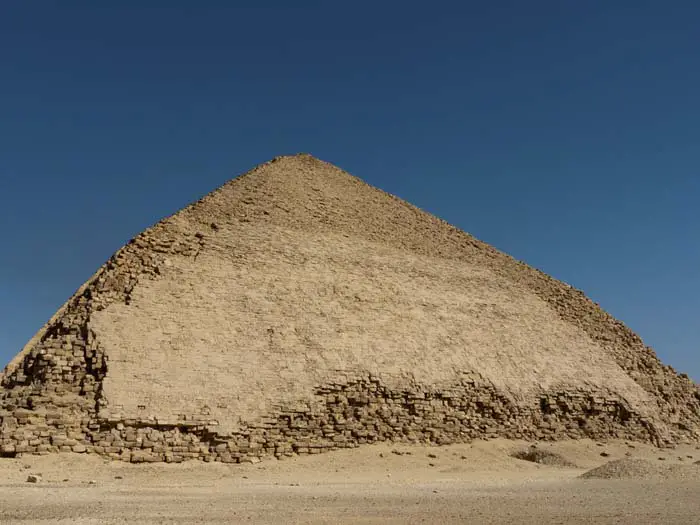
© kairoinfo4u - King Snefru's Bent Pyramid
The Red Pyramid was the last pyramid Snefru built. He made the core out of red limestone, which gave the pyramid its name. The interior structure of this pyramid is less complicated than that of the Bent Pyramid; however, some scholars believe there might be undiscovered chambers inside both pyramids.
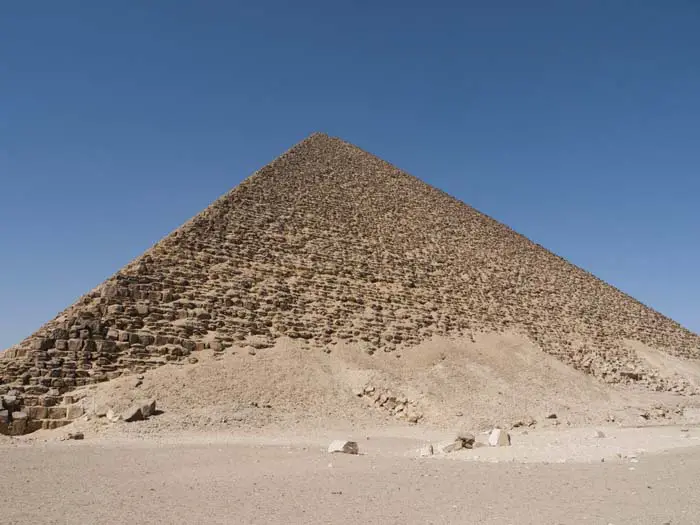
© kairoinfo4u - King Snefru's Red Pyramid
It is yet to be determined which pyramid served as Snefru's tomb, as no one has yet found the pharaoh's body and burial chamber. Scholars think Snefru built a series of small pyramids to serve as sites for his funeral cult in the provinces. They have excavated several pyramids, but evidence has only tied one to the reign of Snefru.
Egyptologists have not found many temples or cities dating to Snefru's time. Most of the Old Kingdom sites are below the water table. This has made excavations difficult, therefore most of the information about his reign comes from his funerary complexes.
Facts about Snefru
- Snefru was the first pharaoh of the Fourth Dynasty.
- He built the first true pyramids.
- Snefru's son, Khufu, built the Great Pyramid.
- Snefru's pyramid at Meidum was a step pyramid that he later turned into a true pyramid.
- The Bent and Red Pyramids at Dahshur reflect the learning process for building pyramids.
- Snefru's reign provided the labor structure that Khufu used to build his pyramid.
- Scholars have yet to discover Snefru's body or burial chamber.
- The lessons learned by Snefru's builders helped Khufu build the Great Pyramid.

